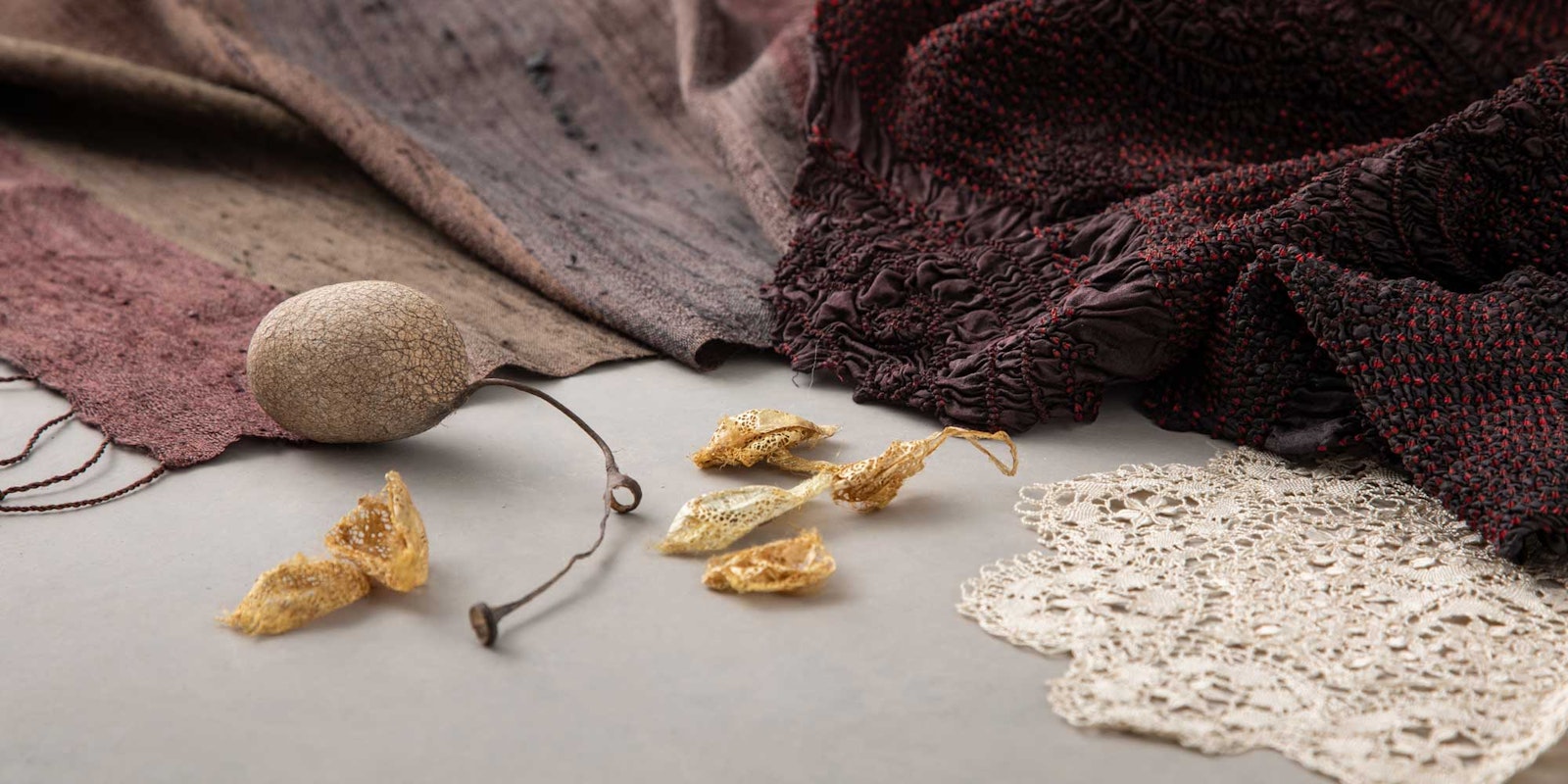You may think you know silk: smooth, slick, warm, drapey, bright, and fine. These are the traits that silk raisers (or sericulturists) have prized and selected for millennia, and they are absolutely true. But when raised, processed, and woven a certain way, silk can also be rough, golden, or elastic.
As the founder of Thrums Books and partner in ClothRoads (among her other roles), Linda Ligon has traveled almost everywhere textiles are made. Along the way she collected special pieces—woven, embroidered, dyed, and embellished. There is a unique joy in sharing any cherished collection, watching the eyes of another admirer as they appreciate what you've chosen. During a break in filming a new course on spinning wild and unusual silks (coming in December 2021), Judith MacKenzie sat down with Linda to talk about some of her favorite silk pieces. Listening to the two of them as they pass the fabric, yarn, and cocoons back and forth is its own education in fibers.
Embedded content: https://www.youtube.com/watch?v=ZCpC0m23Dko
These are a few of the items Judith and Linda discussed in their impromptu trunk show.
Cocoons
No discussion of silk is complete without talking about worms—how much they eat, the people who raise them, and their extraordinary cocoons. Some tasar silkworms spin cocoons the size of a hen's egg; Judith loves the look of a crackle finish on fine porcelain. The peduncle, the little stem they use to attach themselves to a hospitable branch, is its own kind of coarse, stiff dark brown silk. (Carefully degummed and processed, though, it makes a unique milk-chocolate silk.)
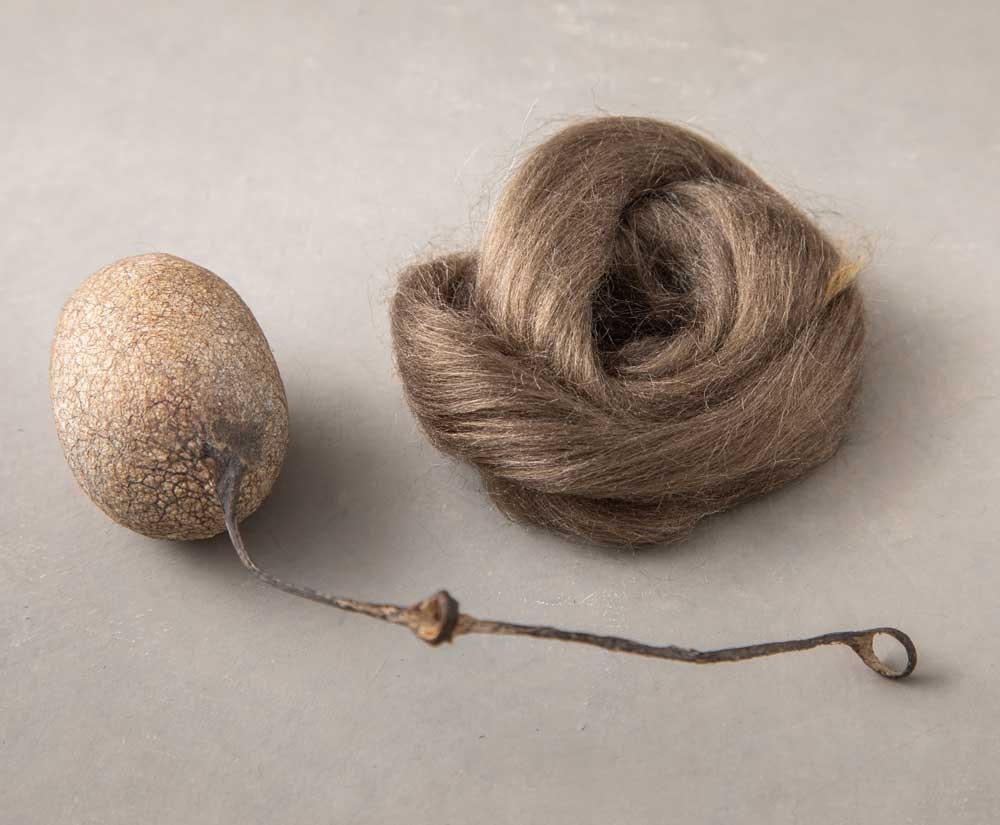
Peduncle silk looks gnarly attached to the cocoon but can become a lovely brown silk.
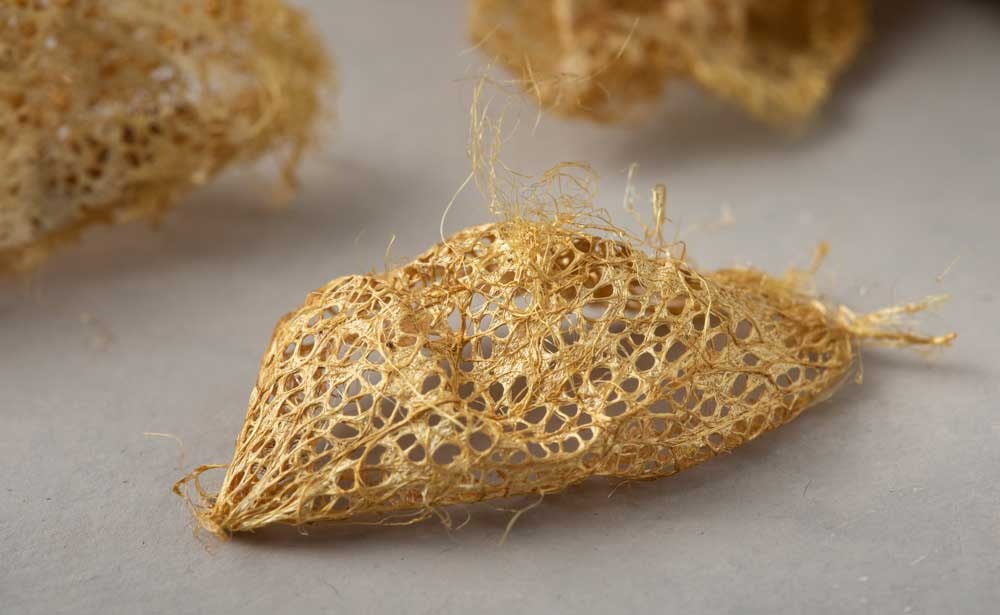
The Cricula trifenestrata silkworm of Indonesia spins golden filigreed cocoons. They can't be reeled, but the luminous gold fiber can be degummed and spun.
Handwoven Silks
There are plenty of silk shawls that have been reeled, dyed, and woven by machine, but Linda shared three of her favorite pieces that were made entirely by hand in East Asia.
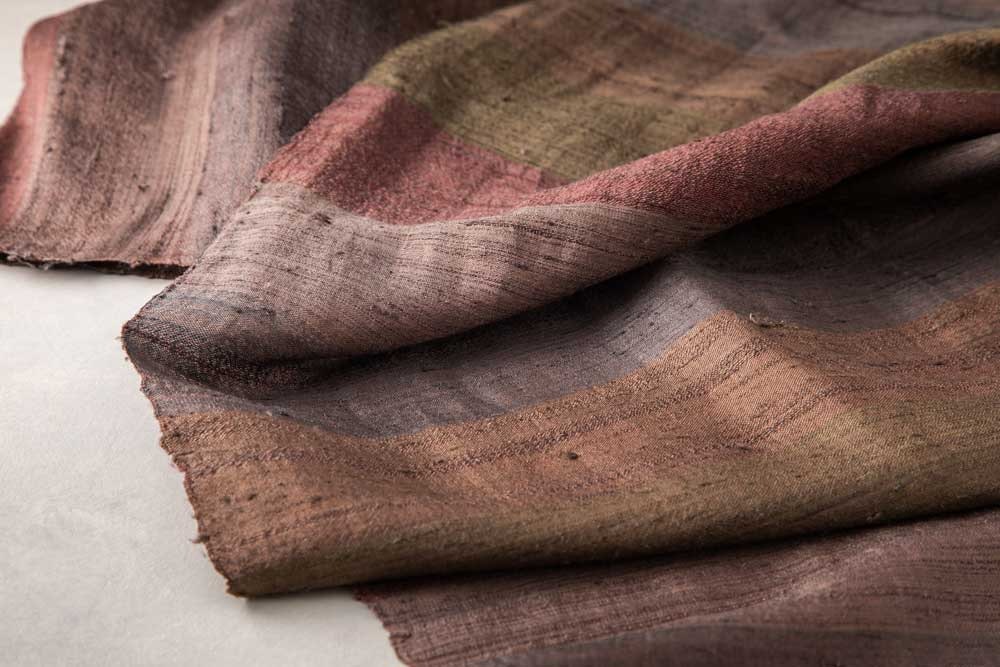
With a smooth singles silk warp, the uneven wild silk weft of this shawl has intentionally uneven textured stripes.
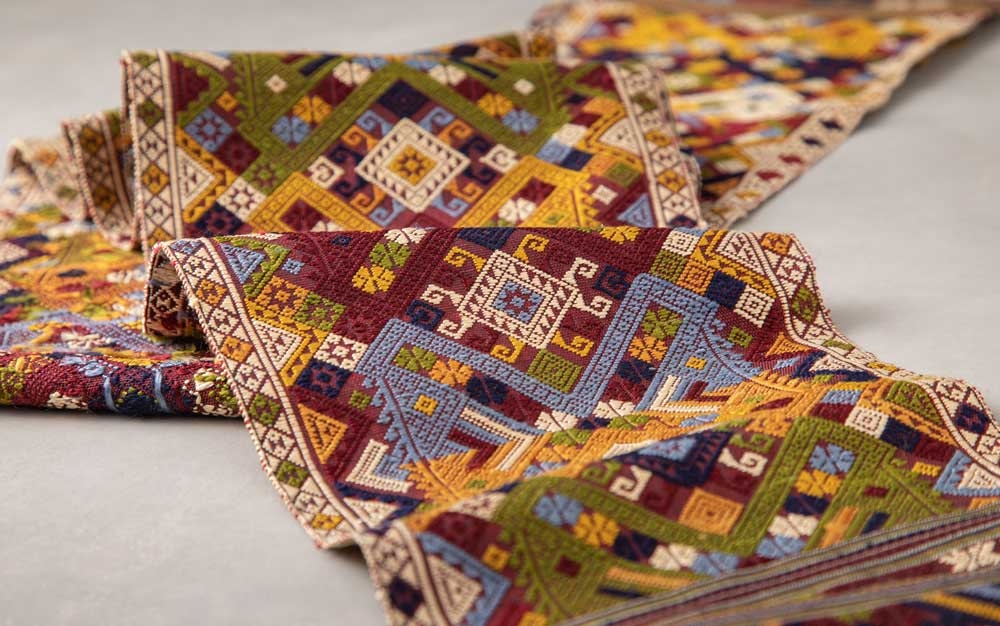
The naturally dyed silk of this cloth in its meticulous pattern has a sturdy hand—it may be lovely, but it's made to be used.
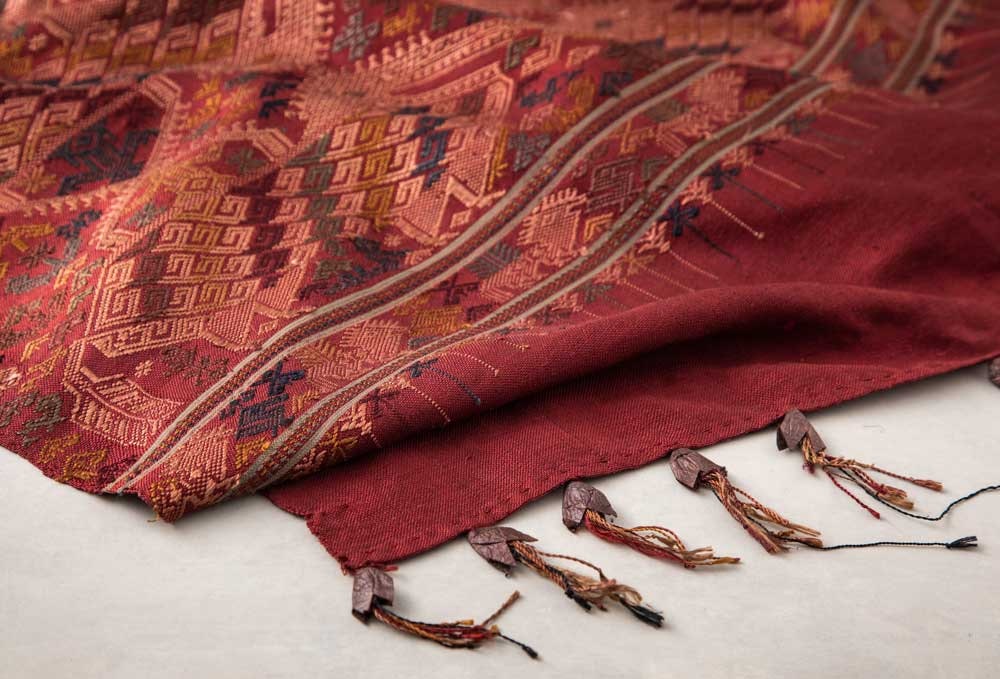
This piece appears to have been overdyed, unifying the colors of the brocade pattern. The tassels at the end incorporate snipped silk cocoons.
Intricate Designs
Silk is as celebrated for stitching as for weaving. Linda showed a few pieces of embroidery from China and a form of bobbin lace known as Maltese lace.
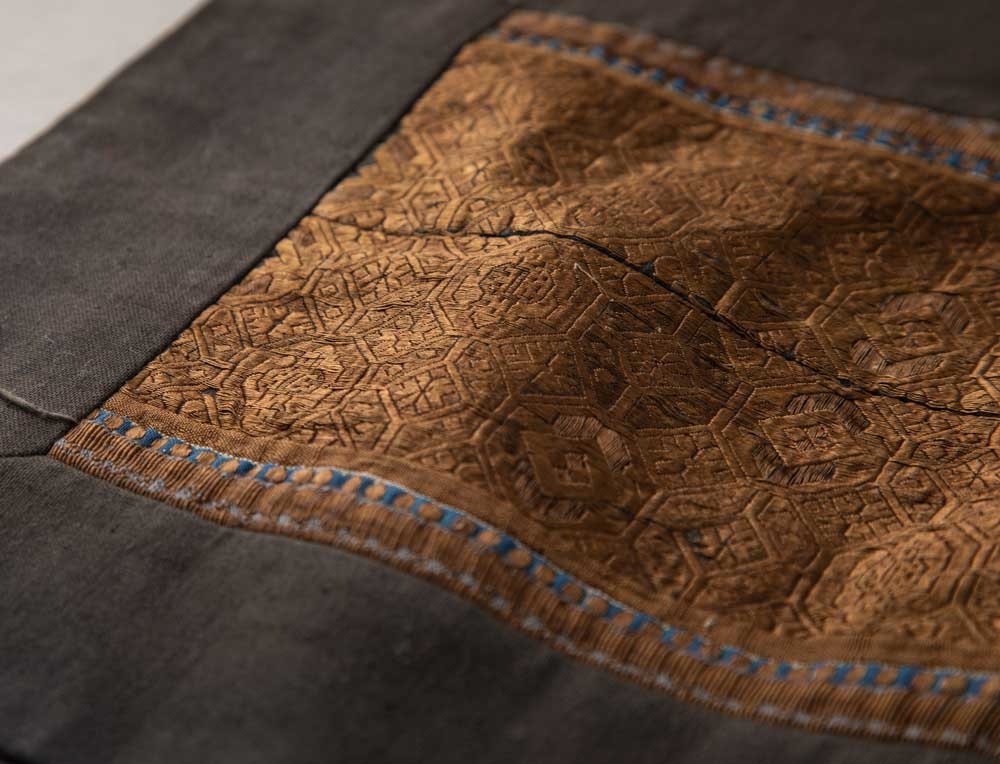
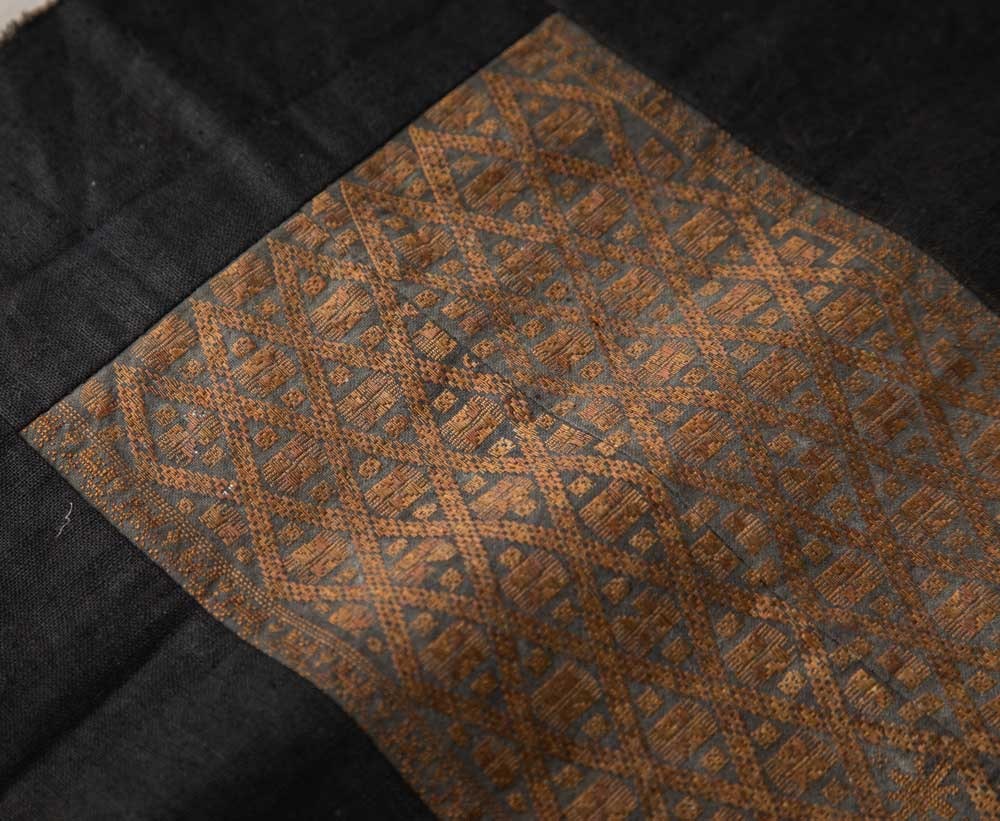
The intricate embroidery on these panels is worked over narrow bands about 4 inches wide. The two shown here are joined with a nearly invisible seam in the middle.
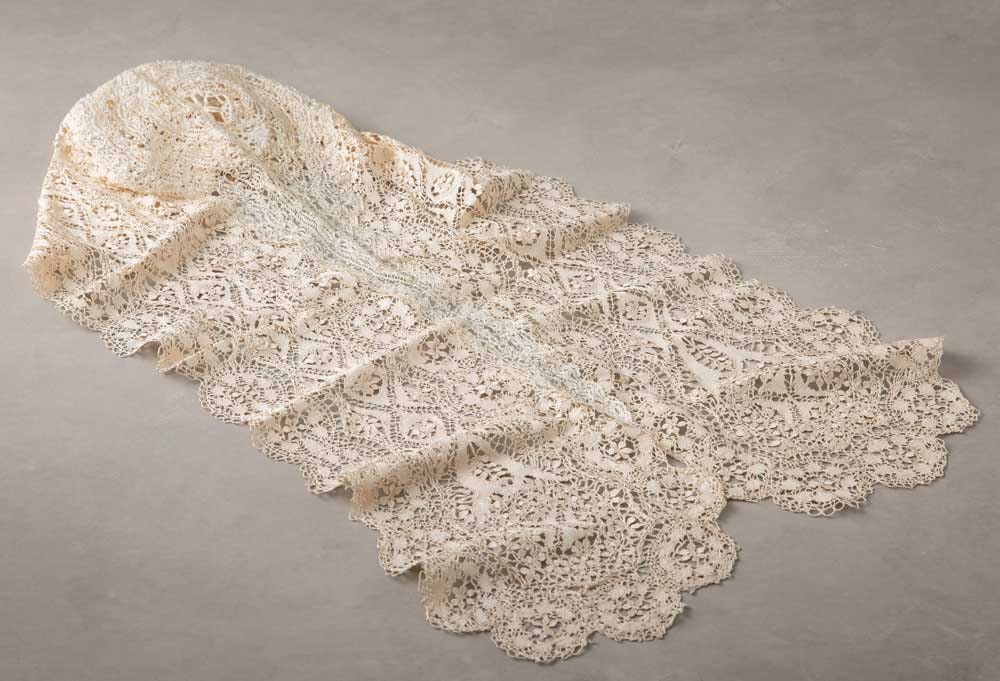
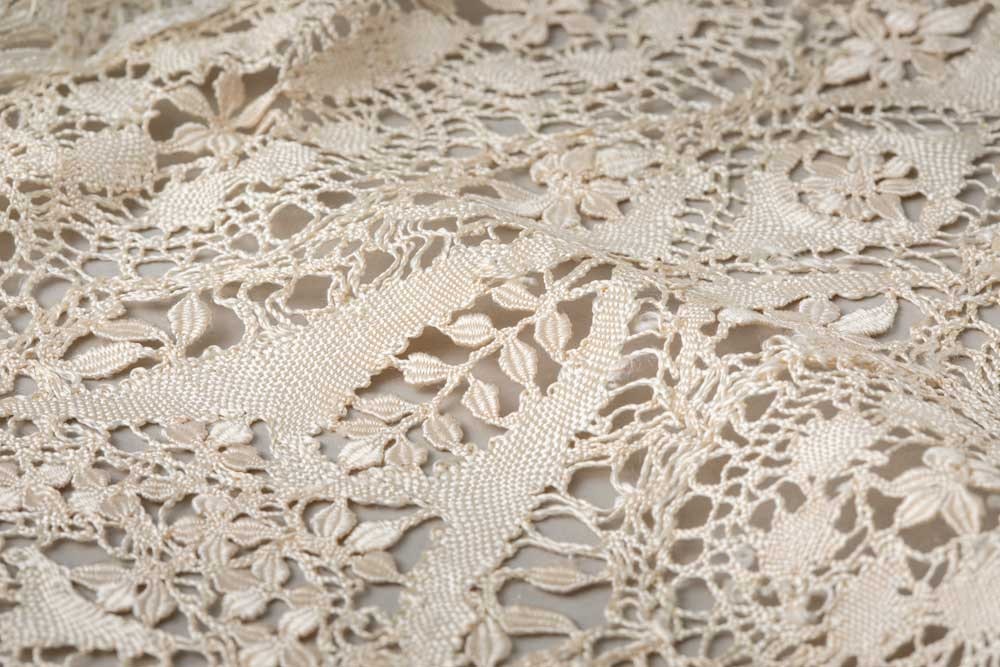
Linda's mother purchased this stunning piece of Maltese lace on a trip to Paris. She wore it as a headpiece on her wedding day, as did Linda.
Bandhani
Bandhani is a resist dye method in which artists draw a pattern of dots onto plain woven fabric (usually silk), then use fine cotton thread to tie tiny, tight knots in it before immersing the whole thing in a dyebath. The word "bandana" comes from bandhani, and you might recognize traditional Indian motifs in the classic kerchief pattern.
Like Linda and Judith, many of us are fascinated by the texture created by the technique, which makes light and drapey silk into something crunchy and stretchy. To keep that effect, the silk must be kept away from moisture that would release the crimpy texture. I've admired bandhani sarees in shiny charmeuse, some with several layers of dye that create a multicolored bull's-eye pattern when the ties are removed. Unlike the other sarees in the shop, which were carefully and crisply folded on hangers, the bandhani sarees were bundled on a shelf. When I admired one, the clerk assured me that if I bought one they would be sure it was properly pressed for me before I took it home. In Indian clothing, bandhani is most often smoothed to feature the design rather than the texture of the cloth.
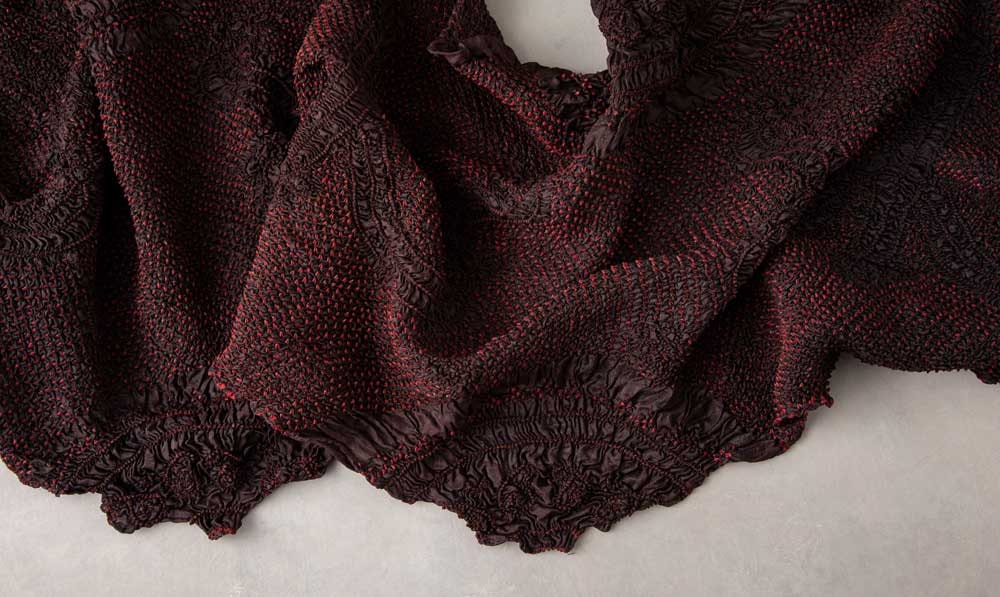
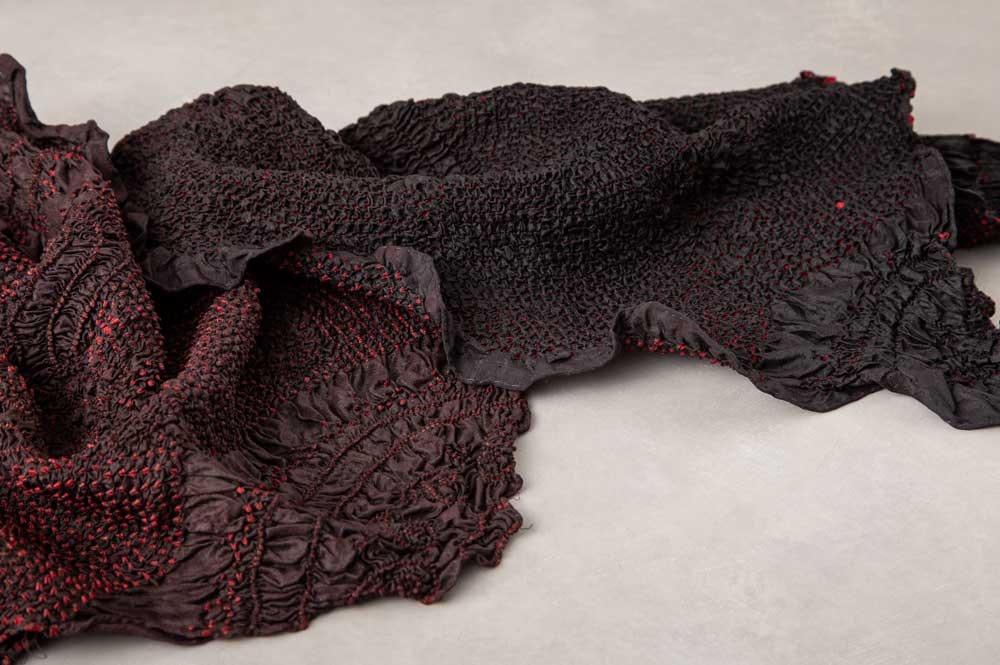
The technique is especially striking when the knots are tied on already dyed fabric, as in this red base fabric. The "wrong" side of the fabric has dimples rather than the pops of color on the "right" side.
Enjoy deepening your love of fiber at LT.Media/Silk and stay tuned for Judith's course on spinning wild and unusual silks, coming out this December.
~Anne

